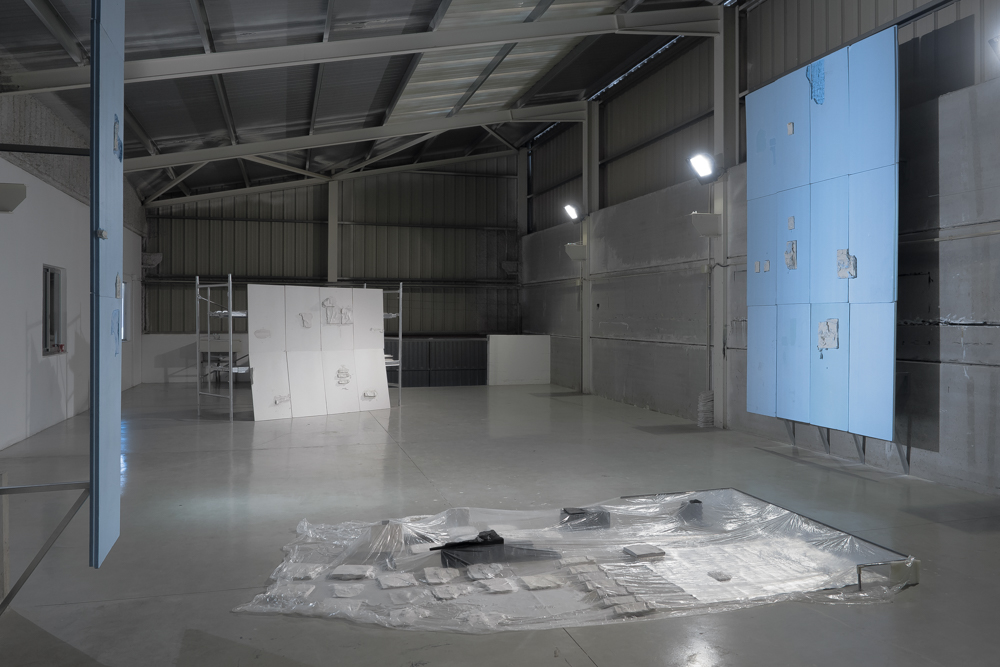
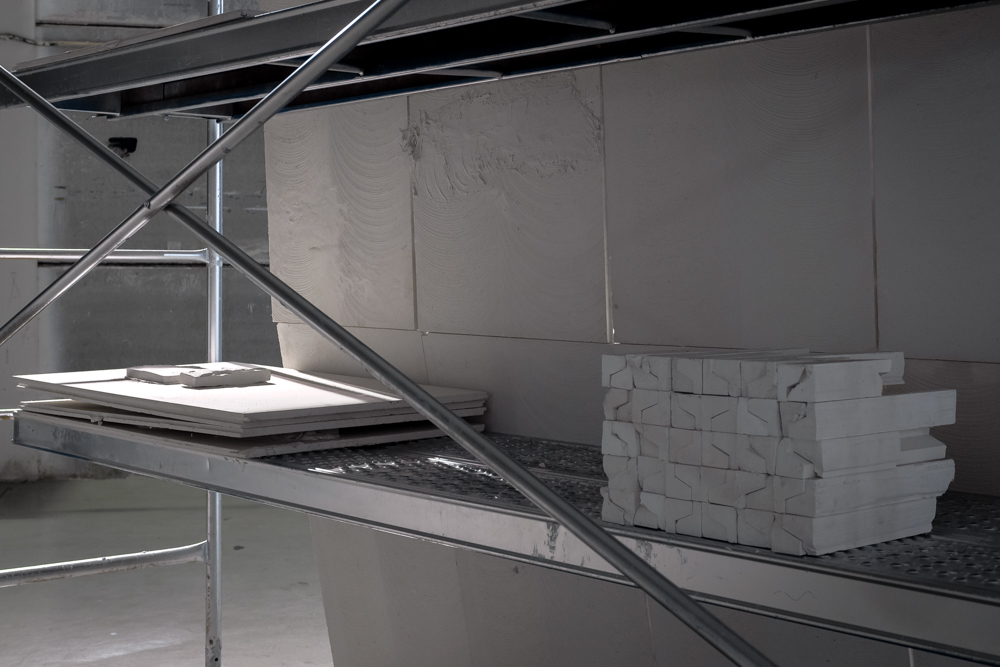
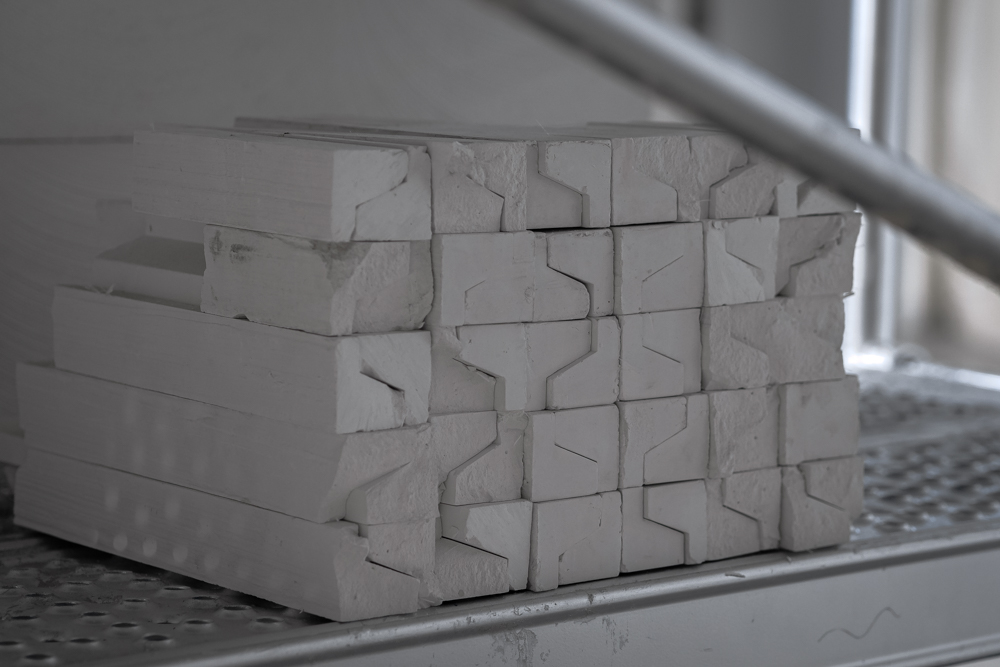
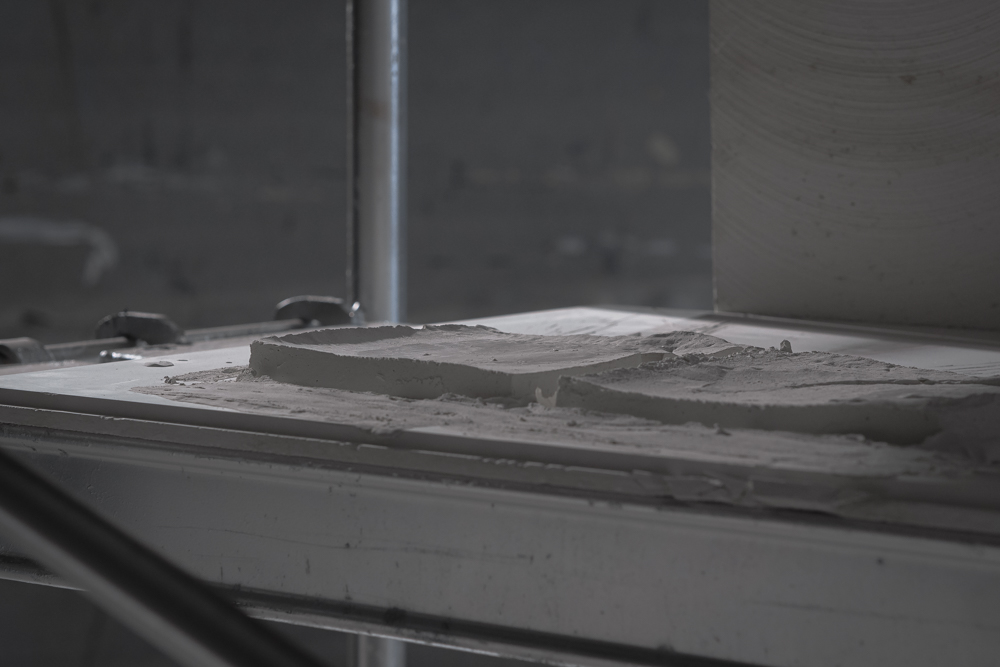
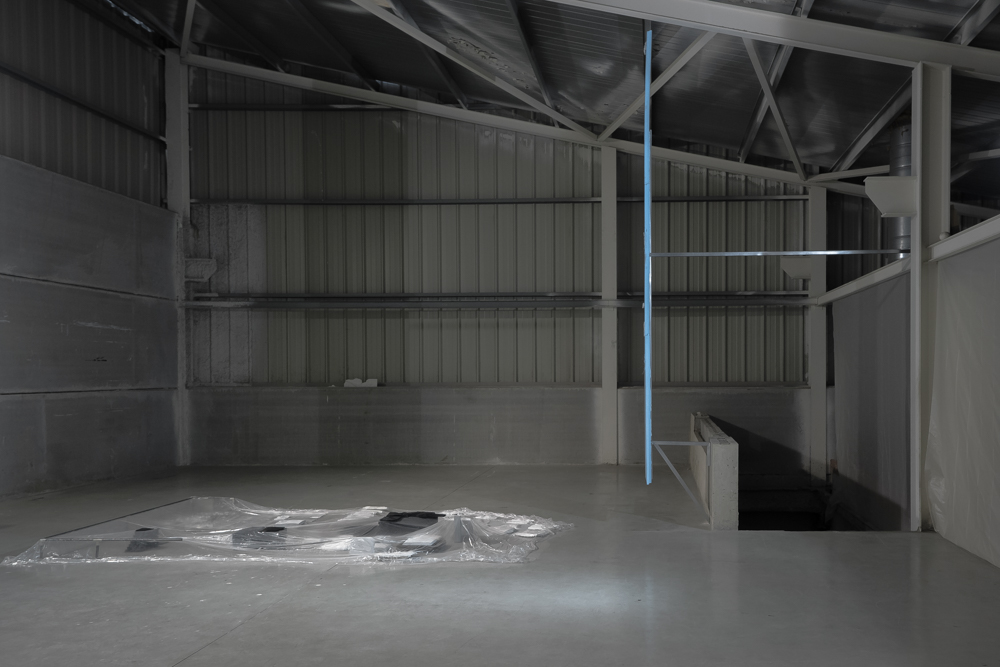
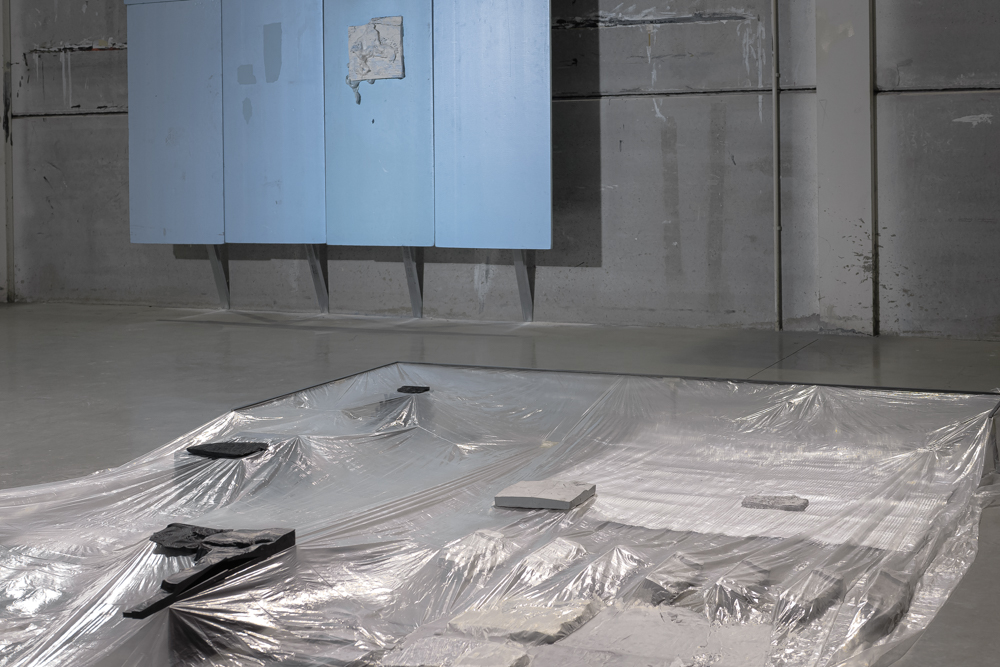
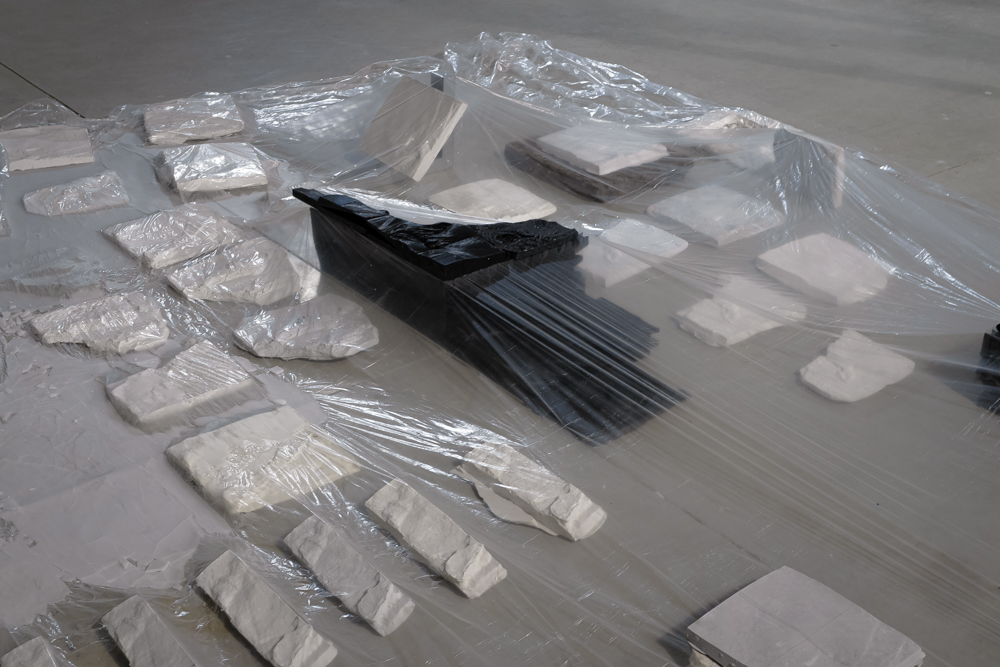
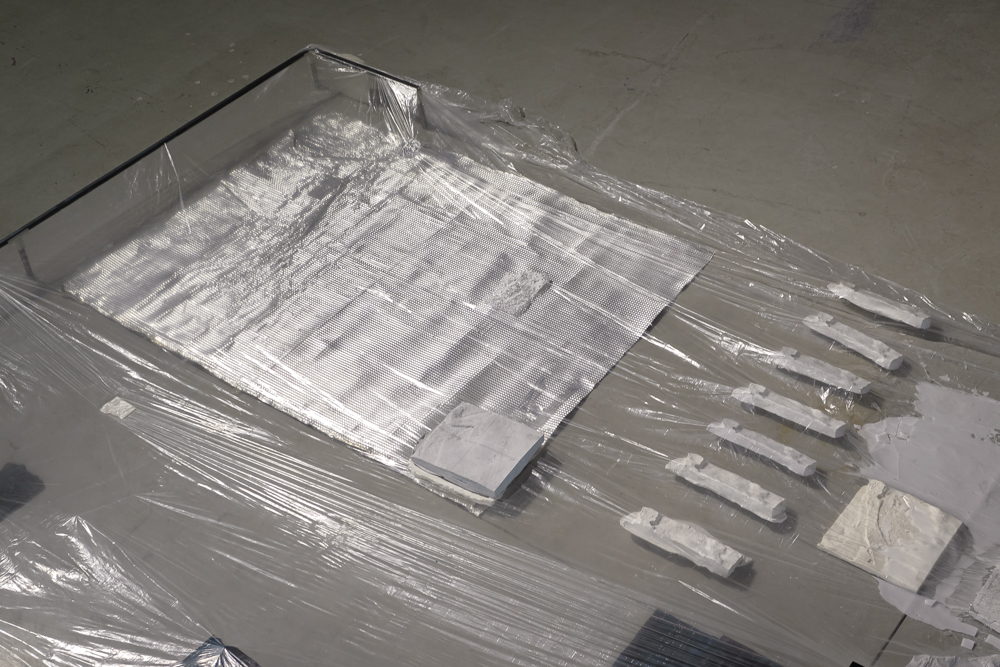
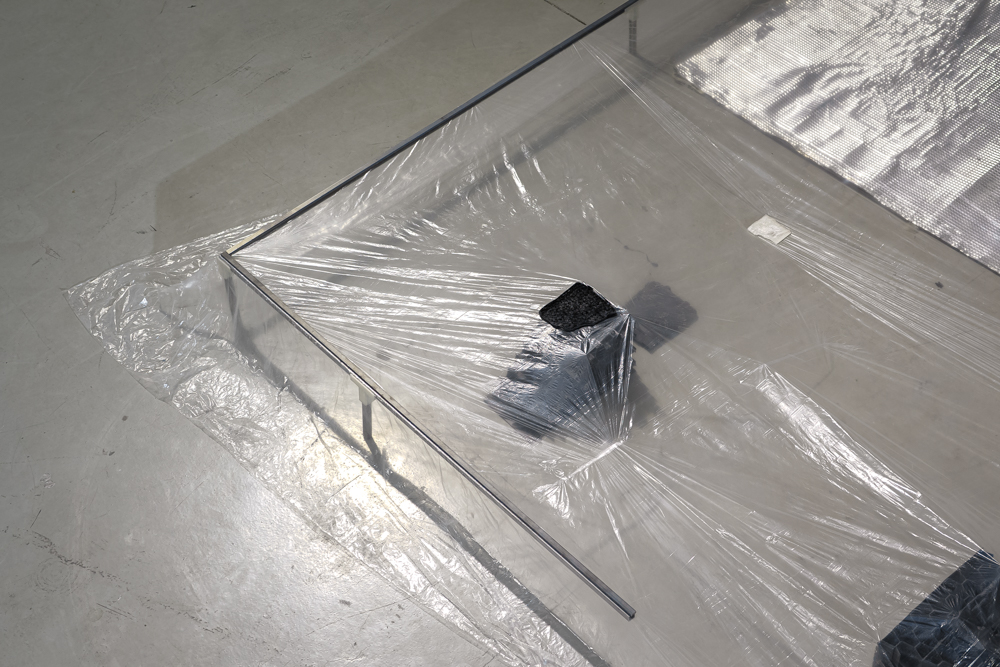
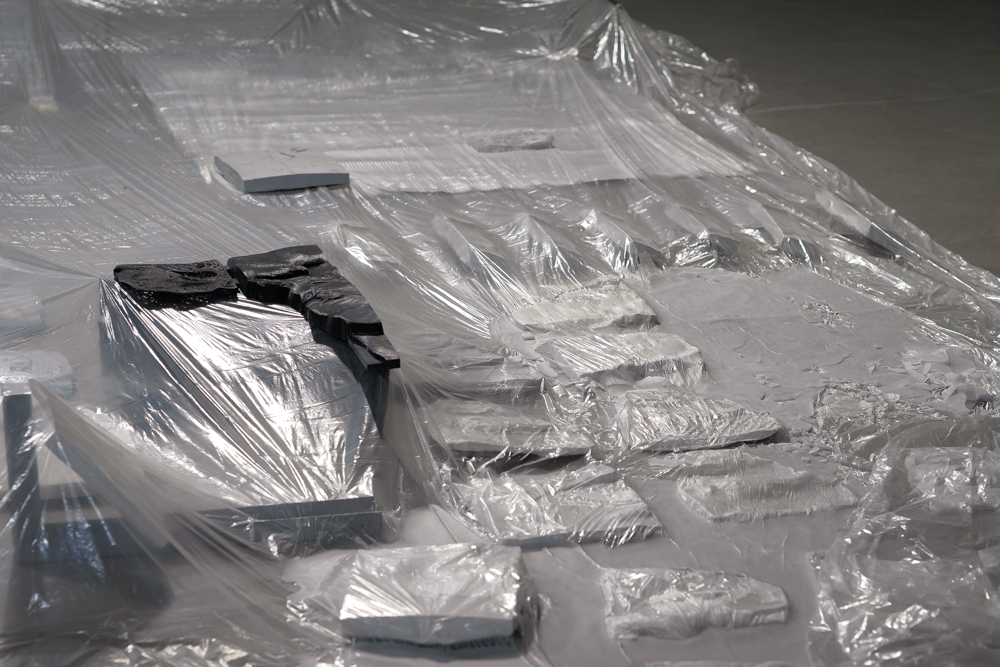
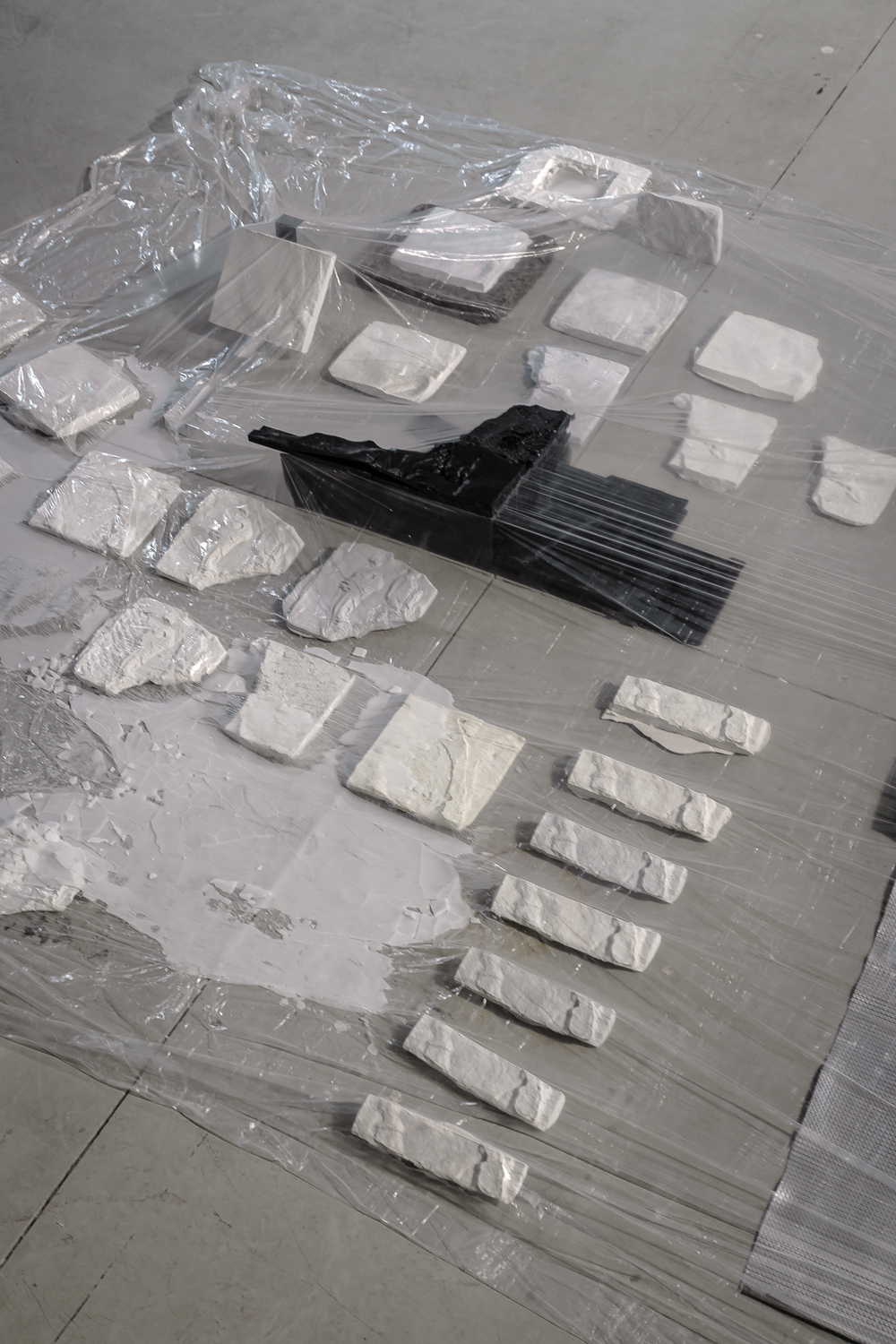

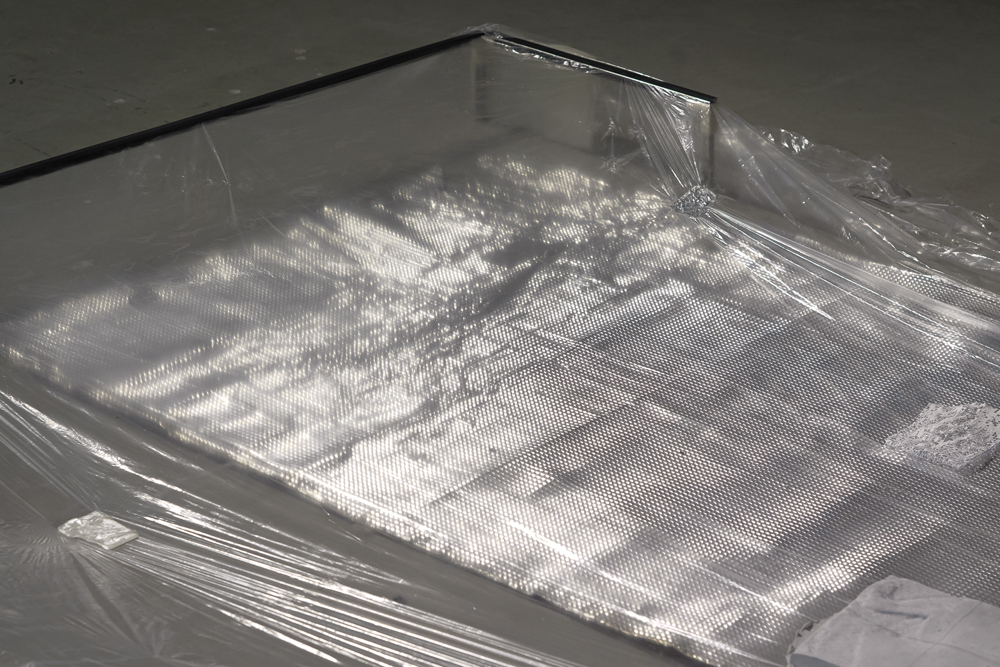
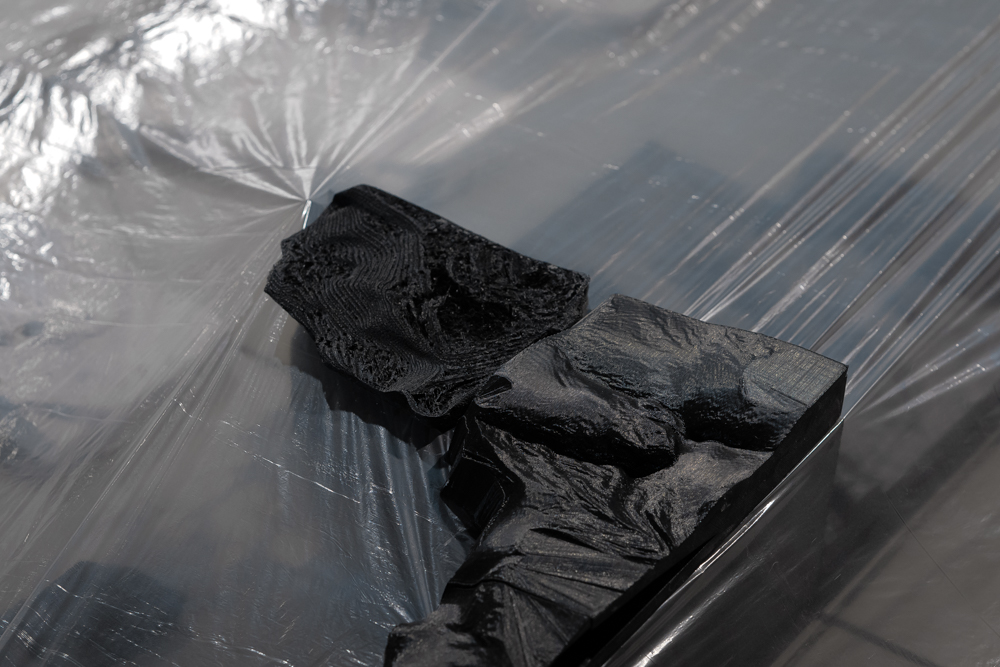
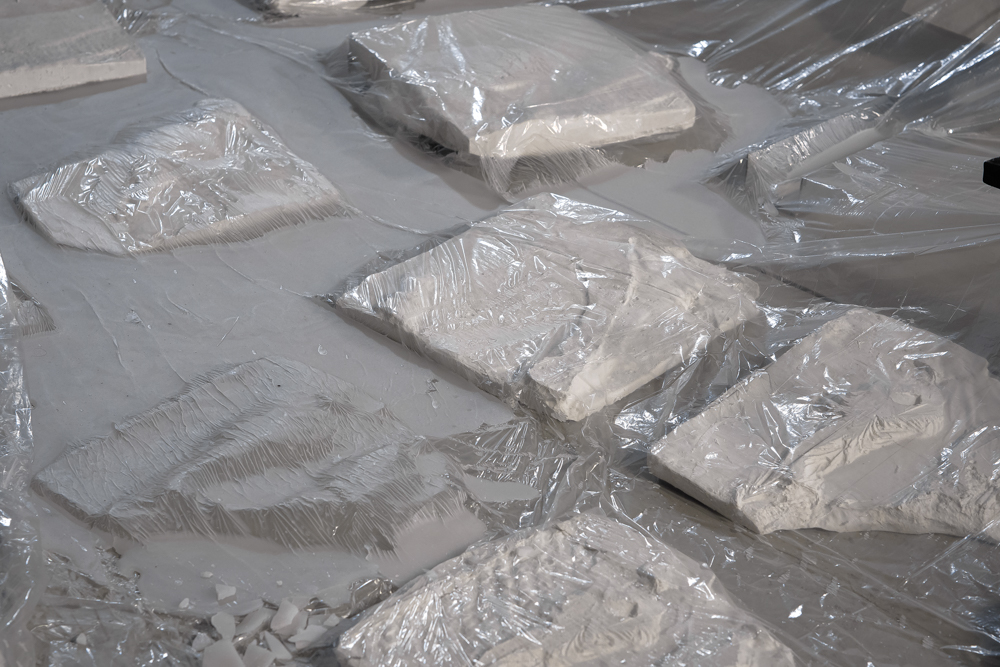
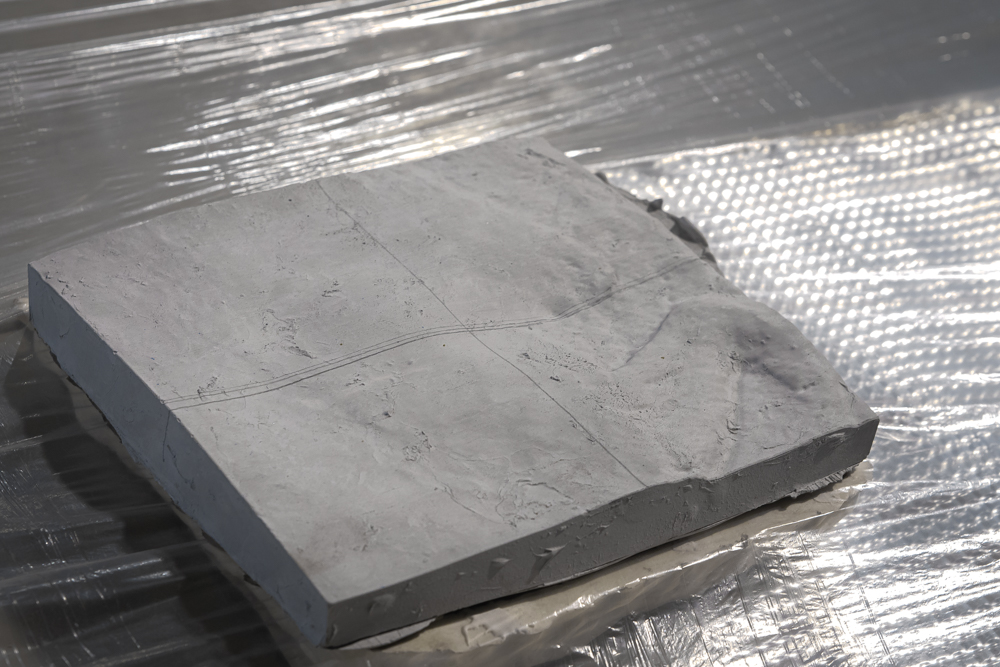

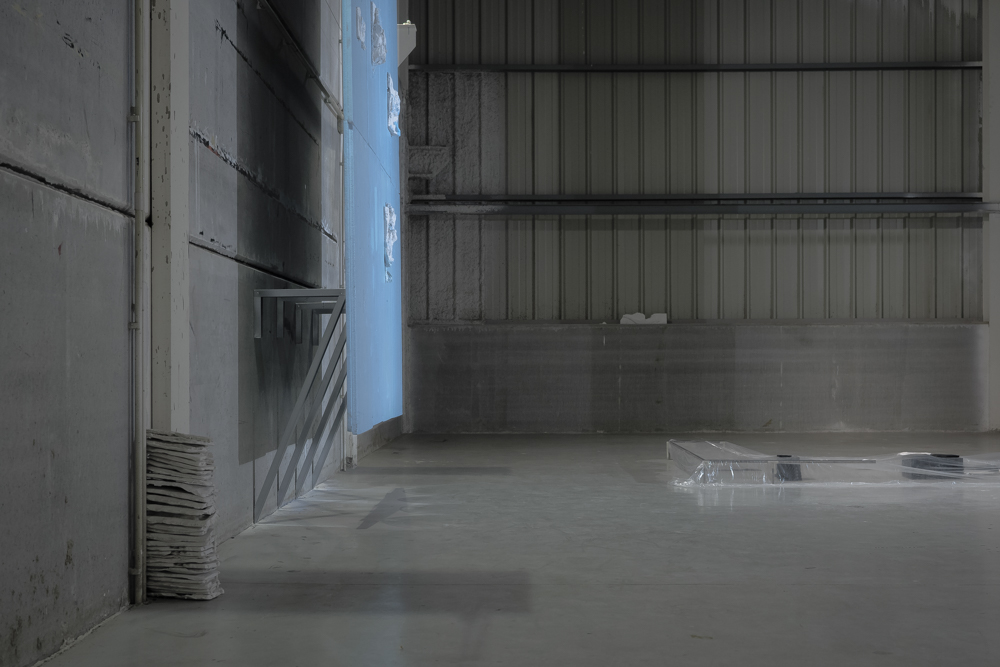
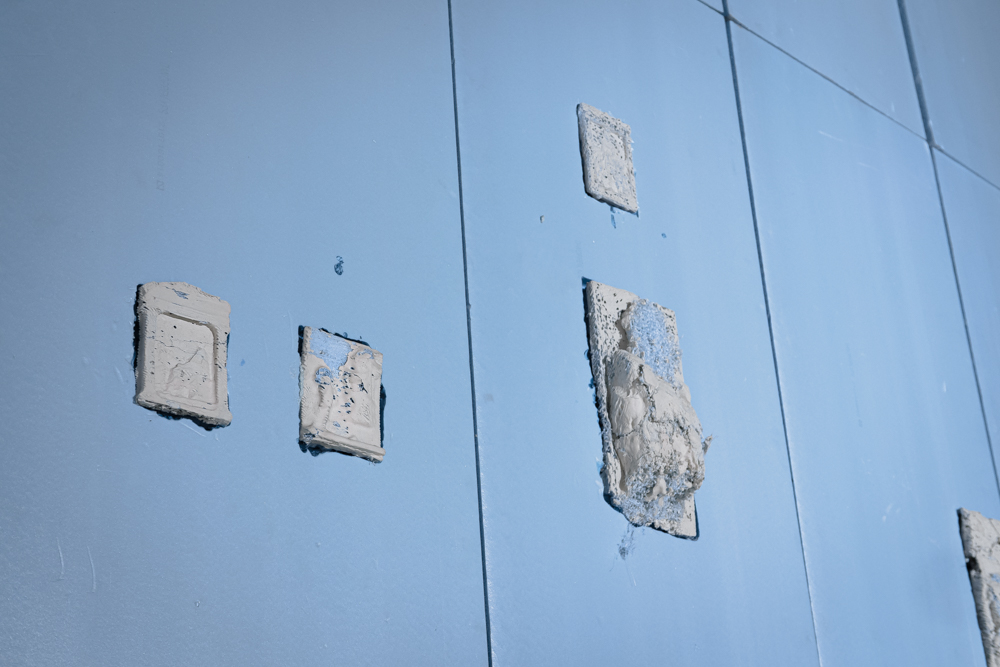
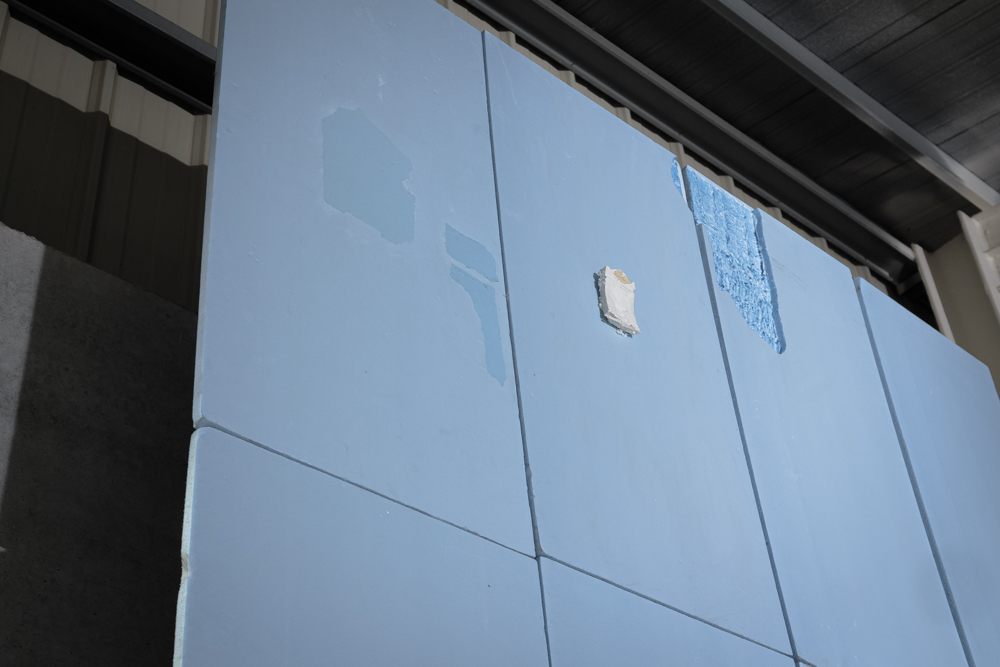
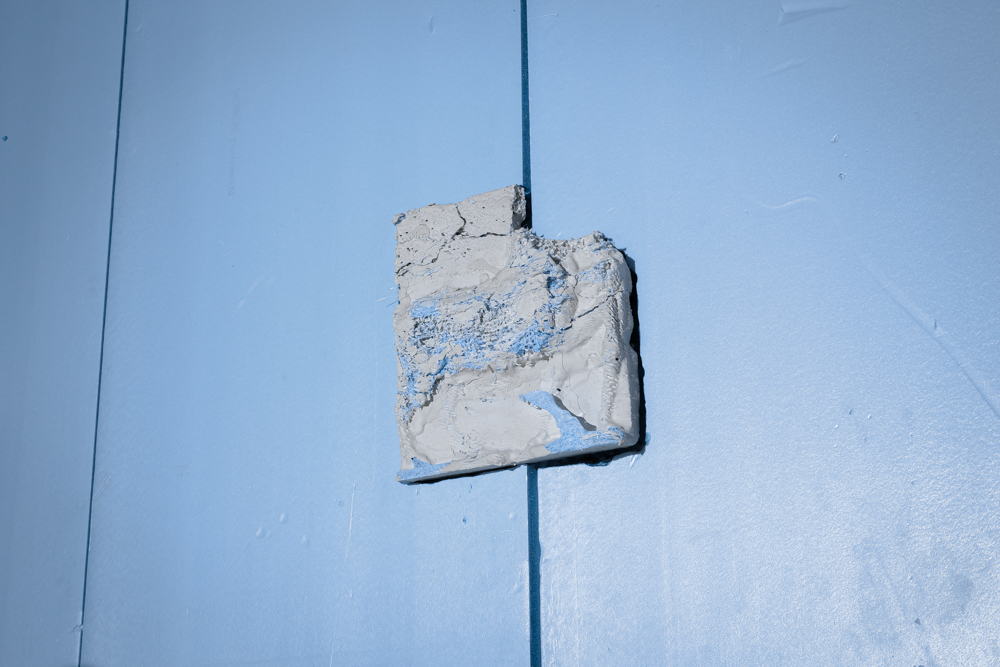
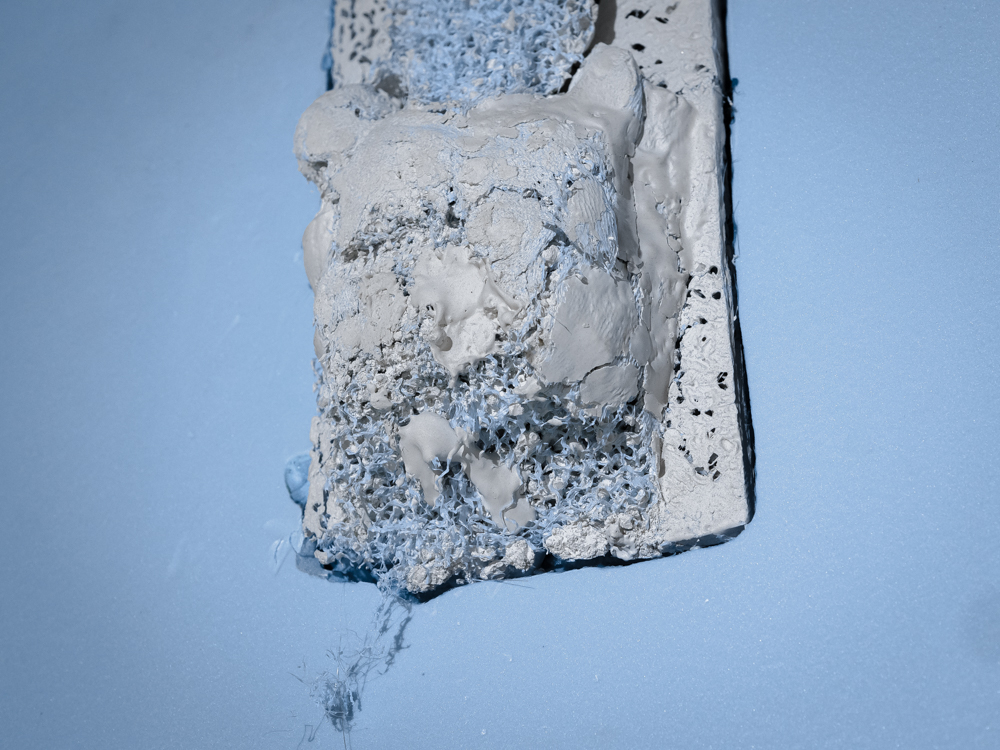
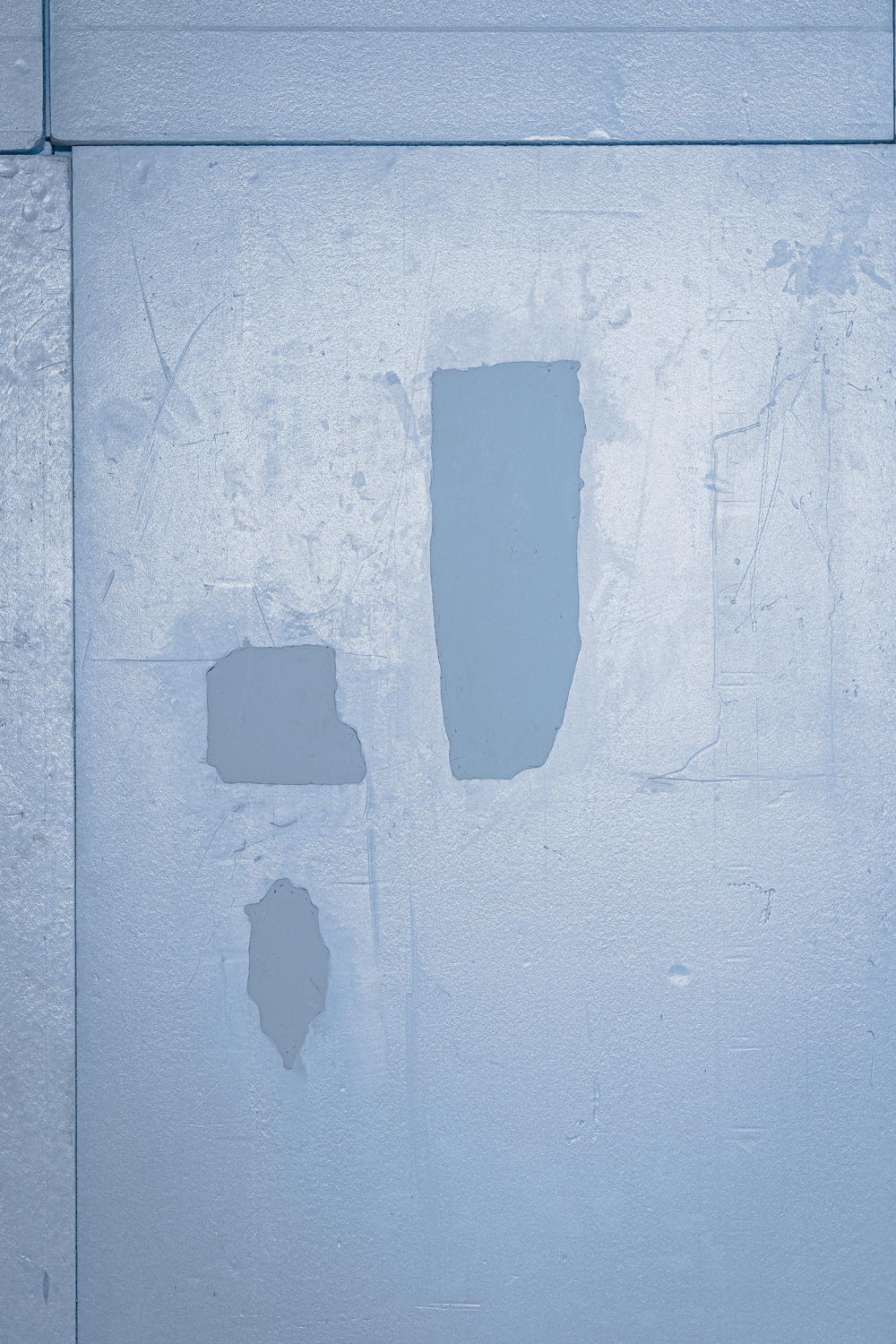
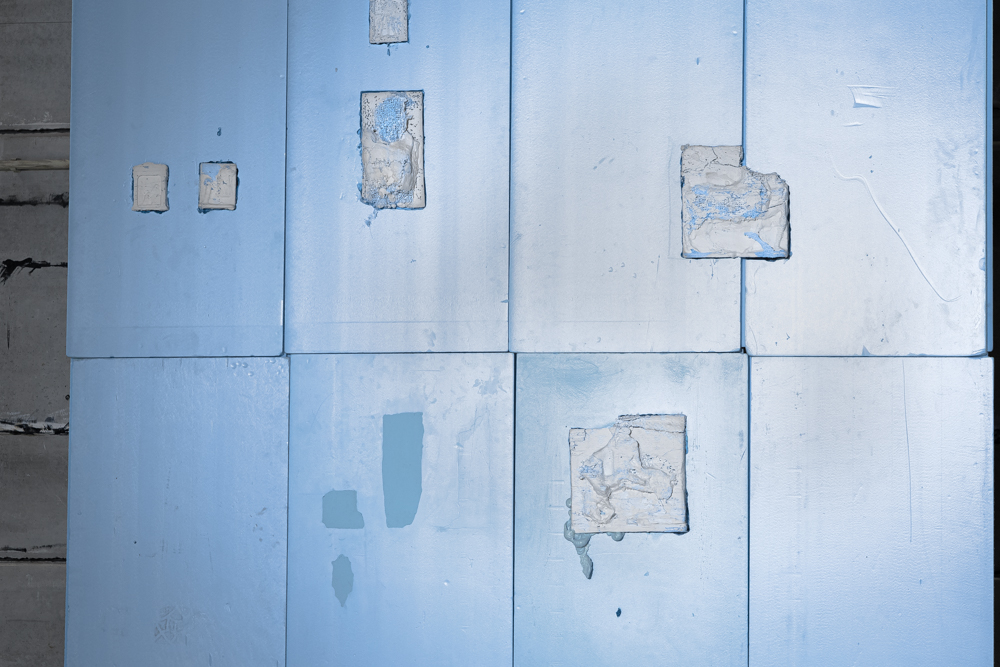
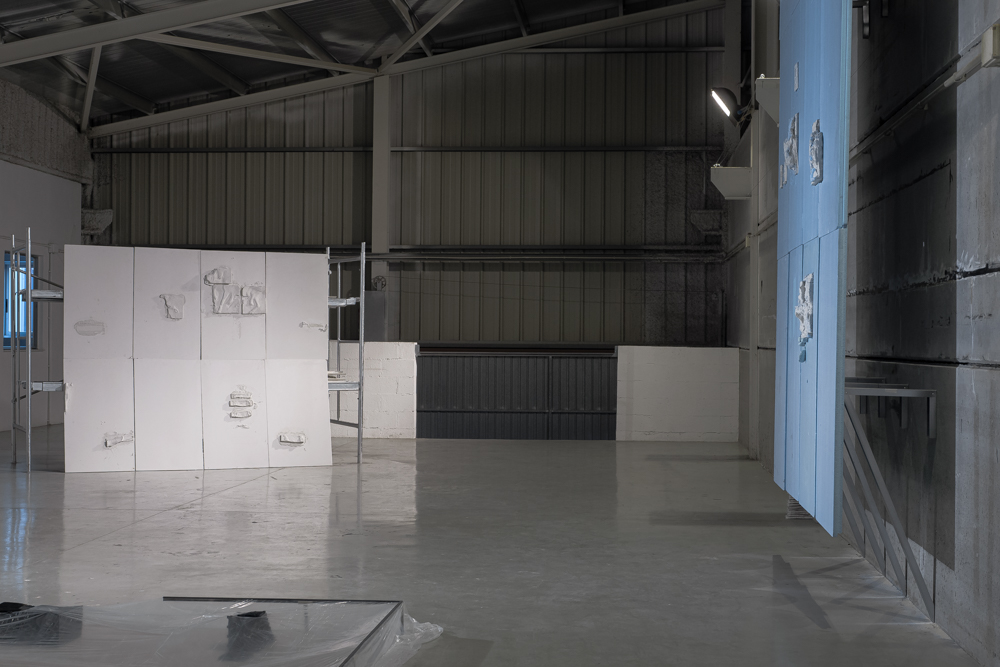
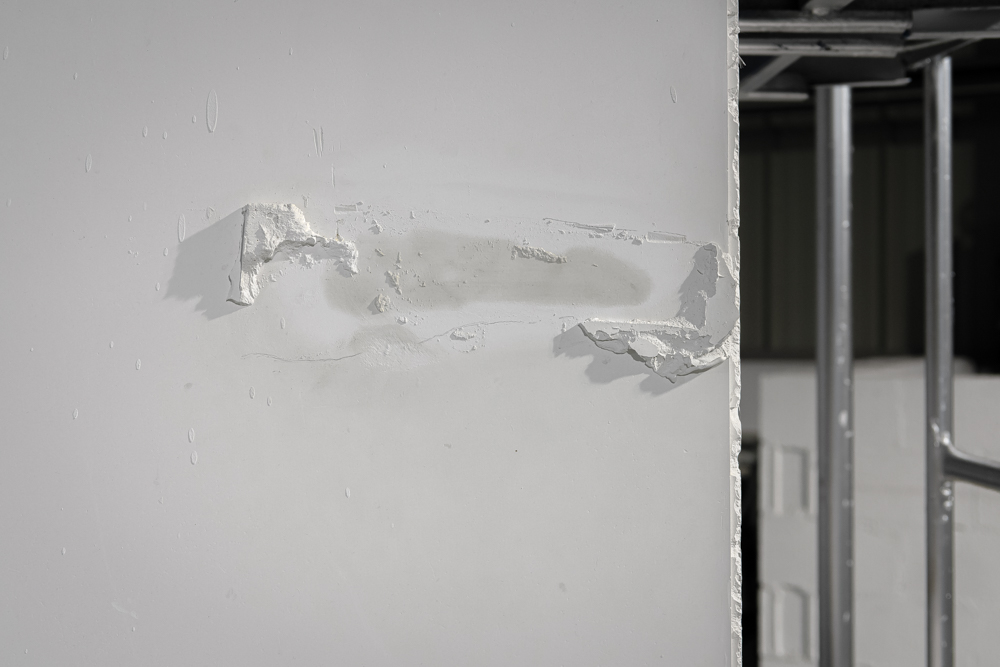
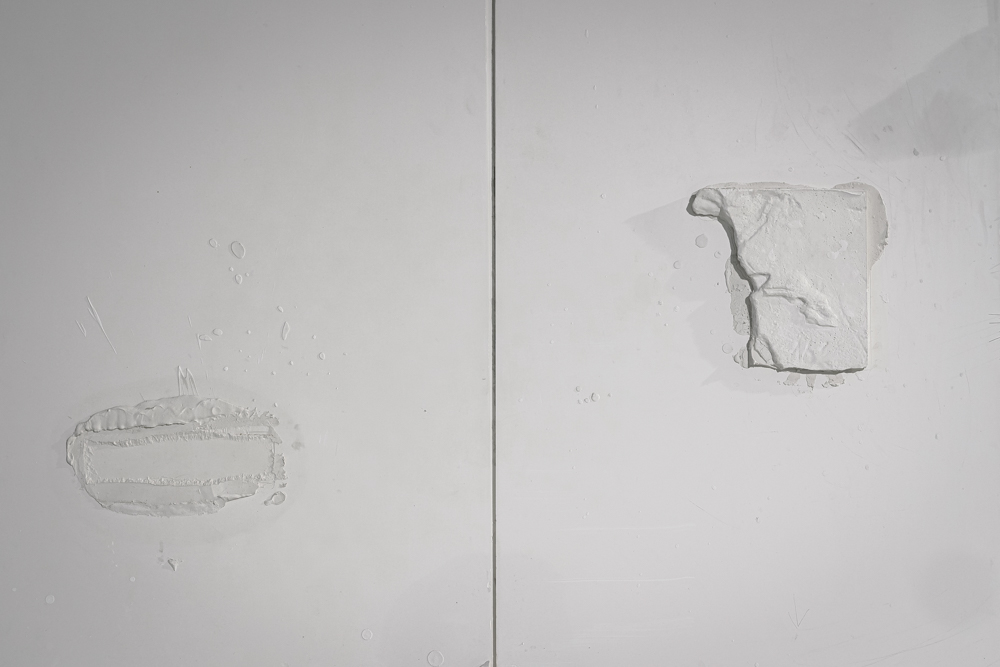
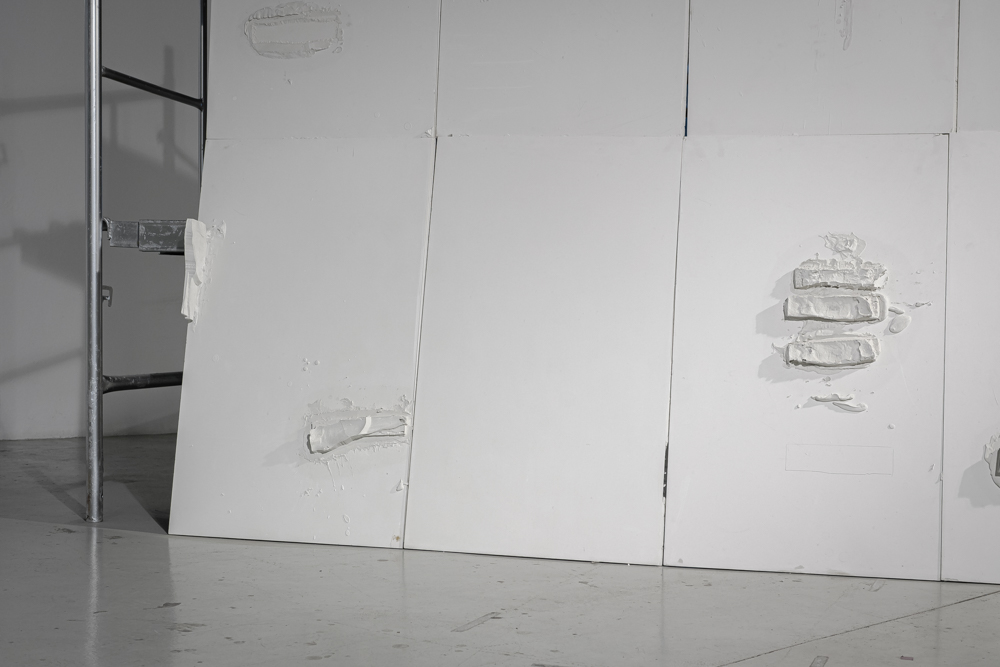


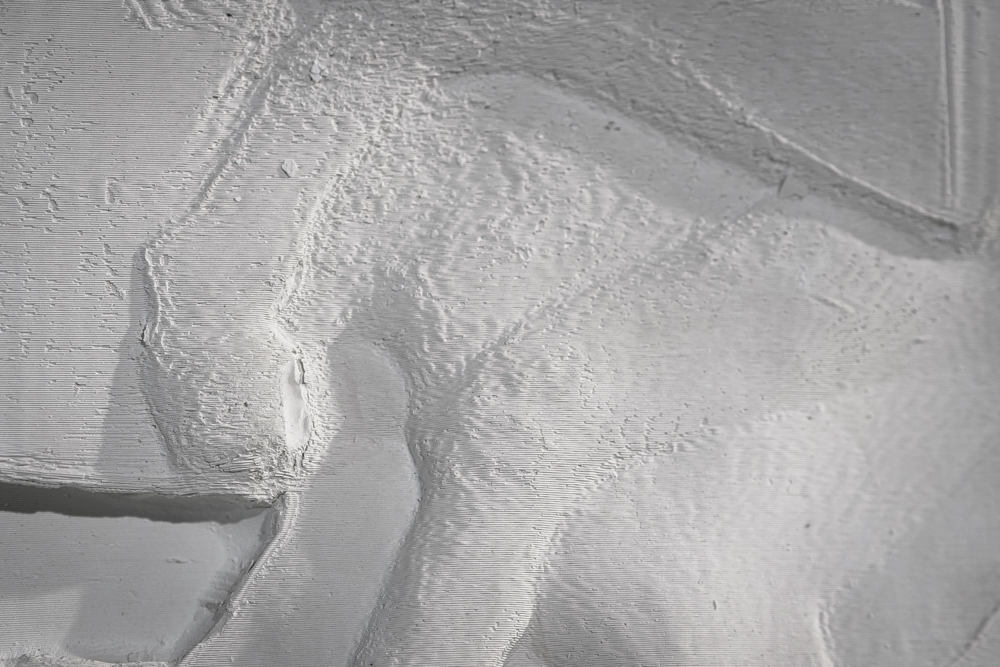
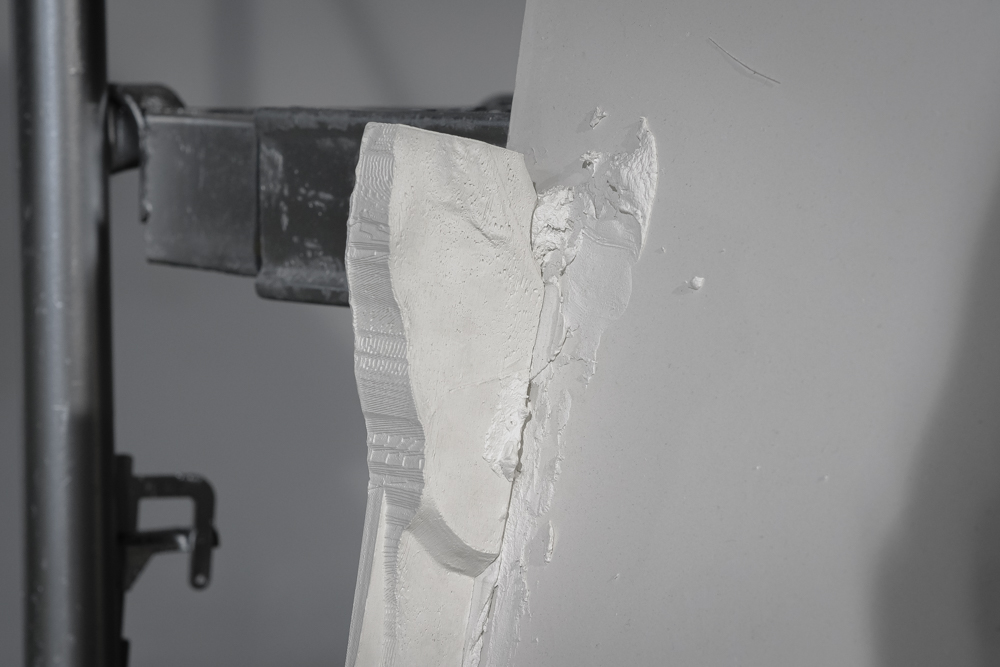

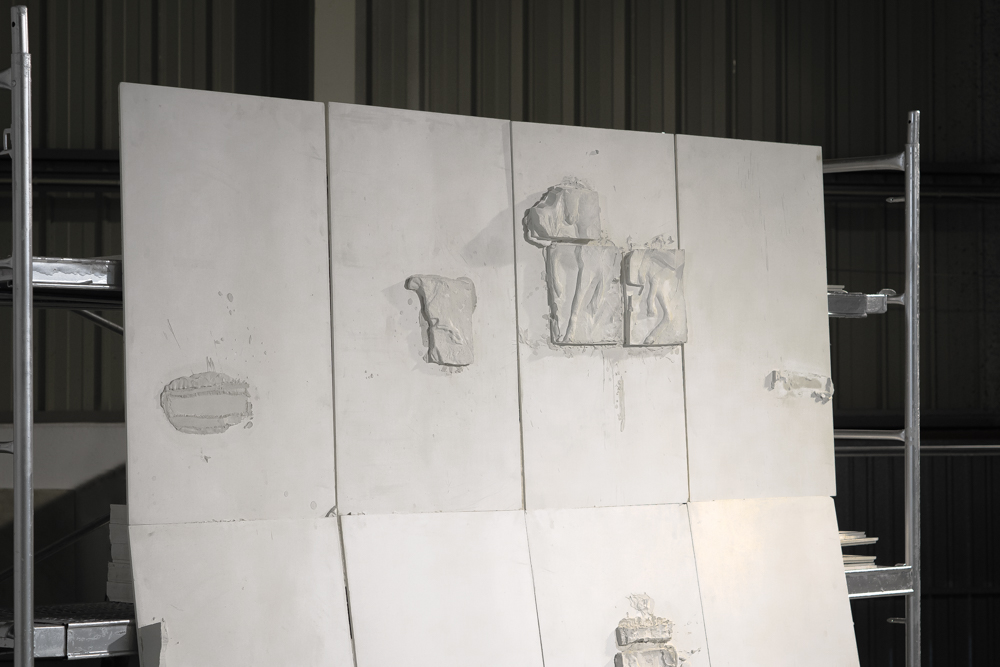
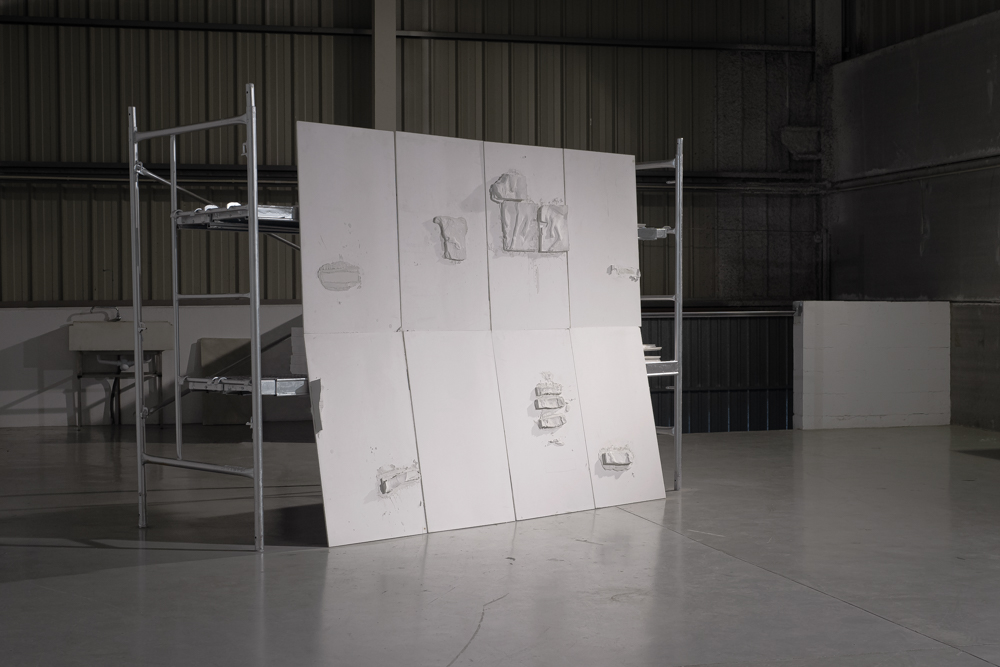
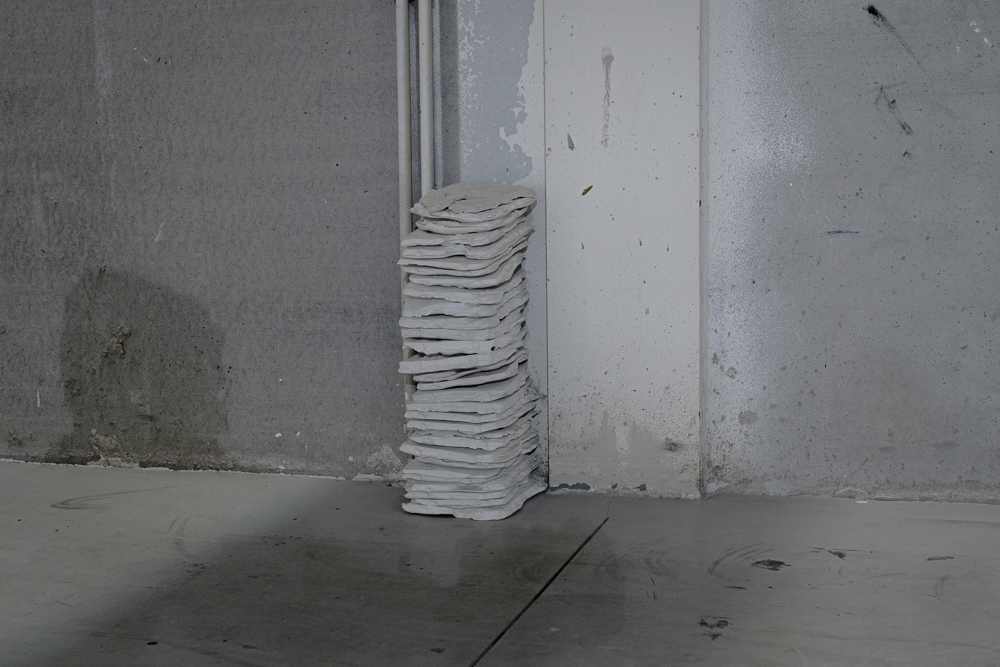

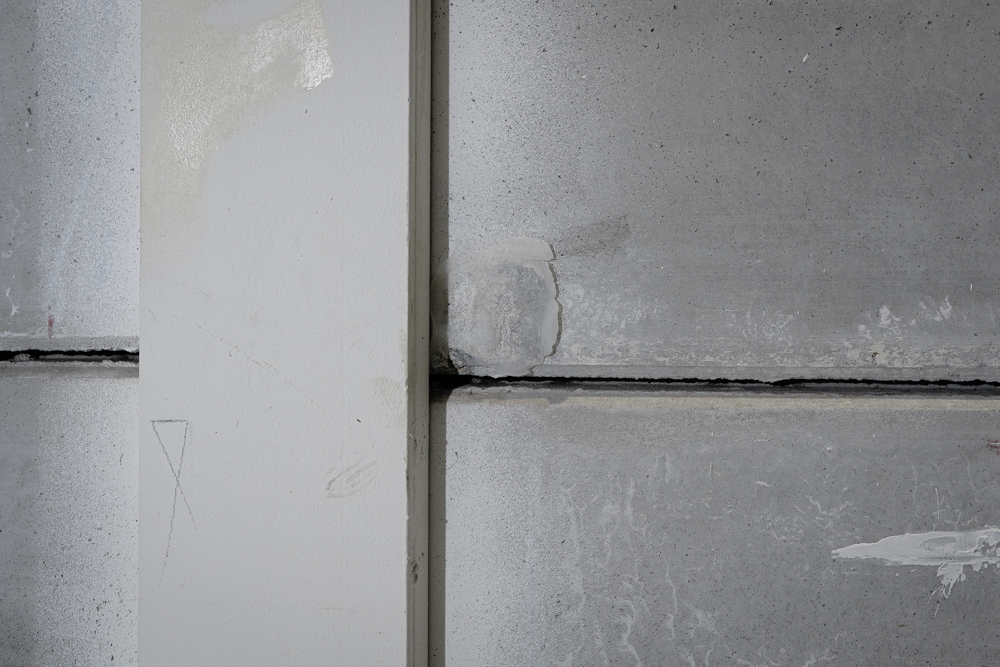

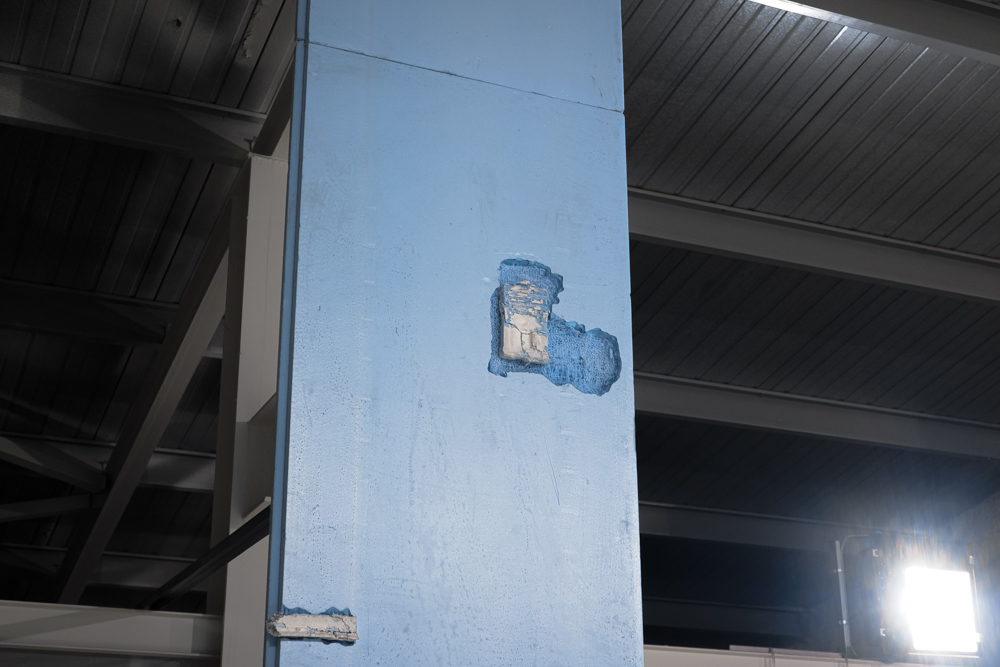
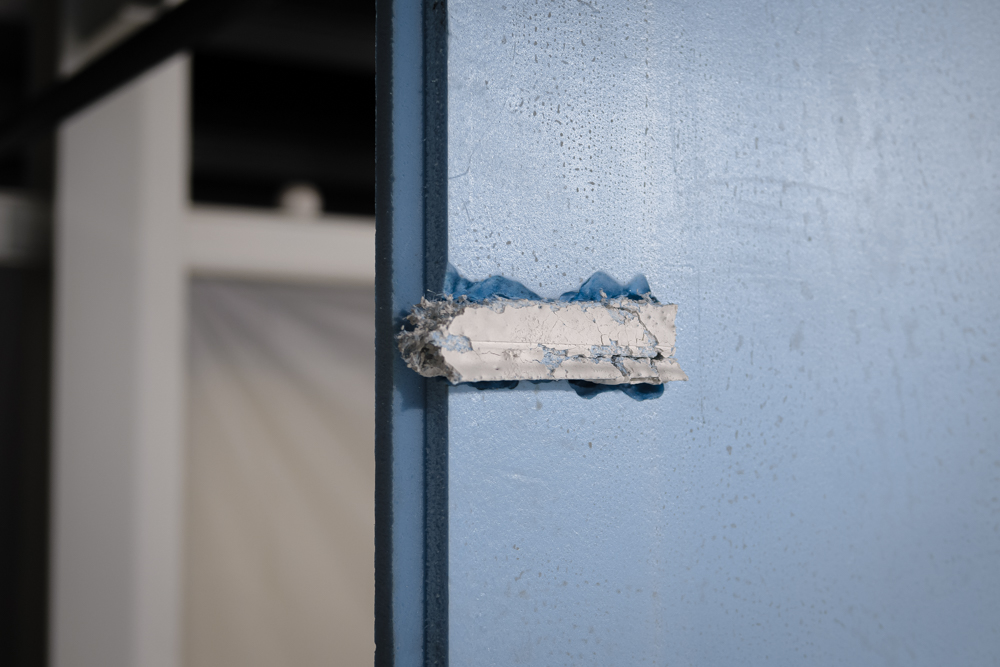
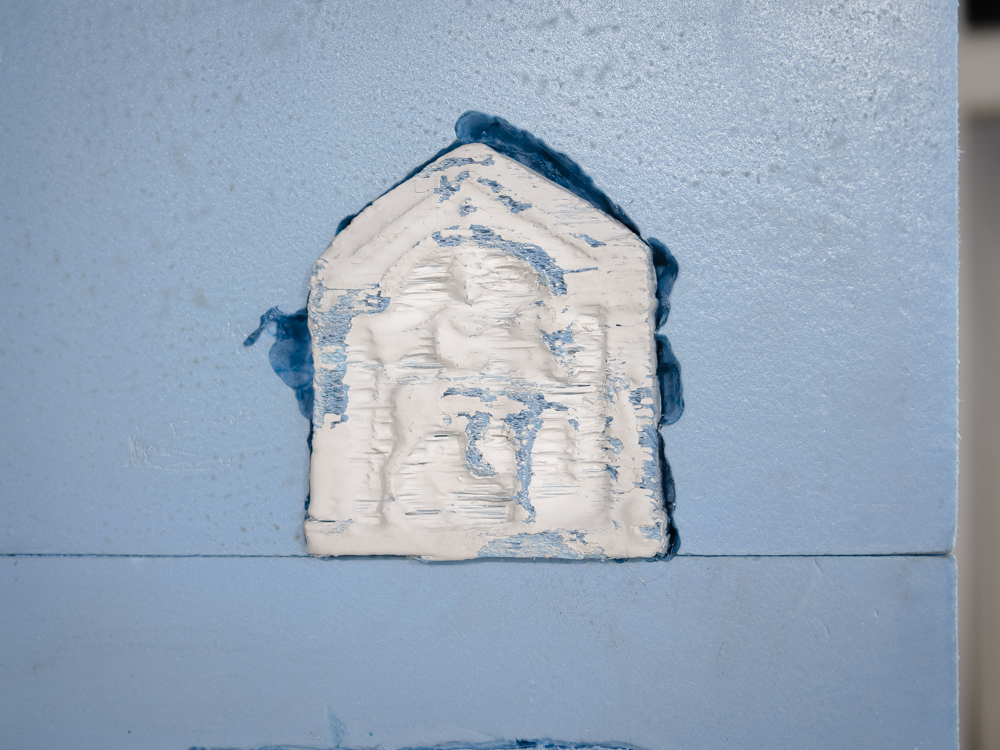
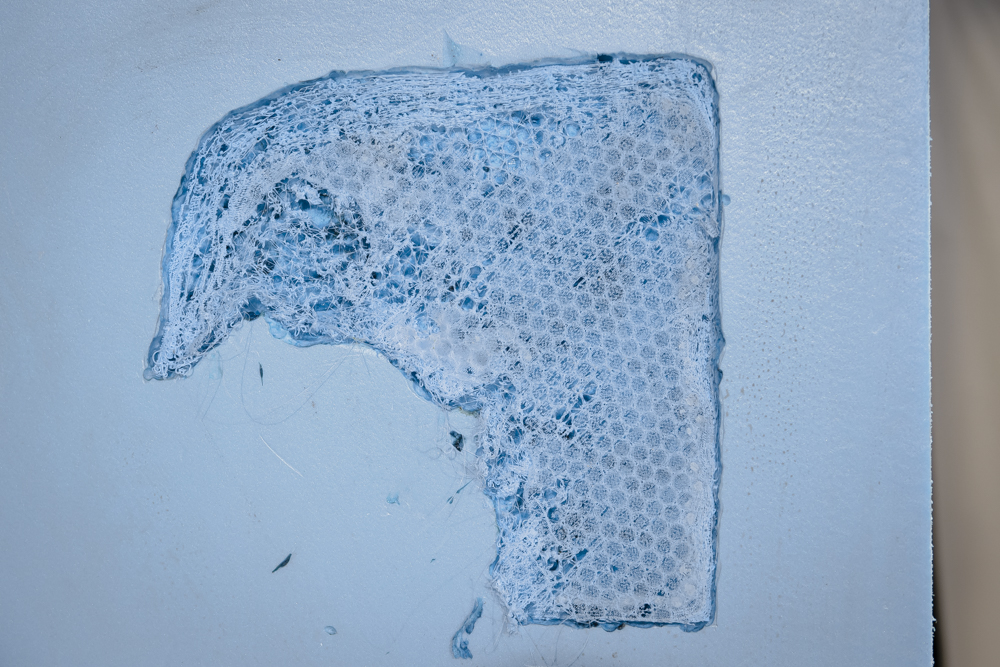
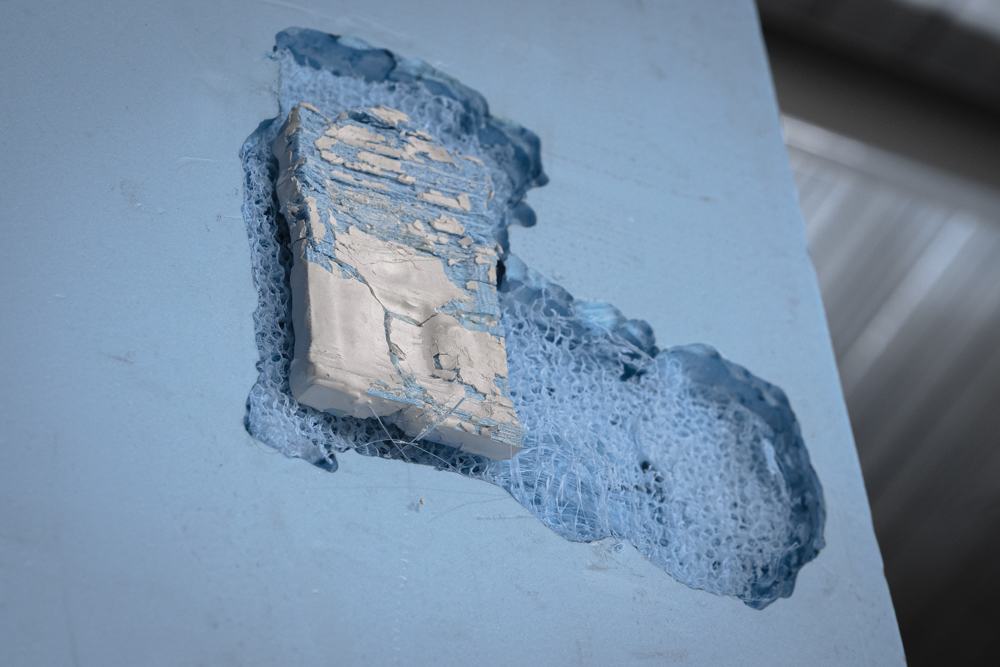
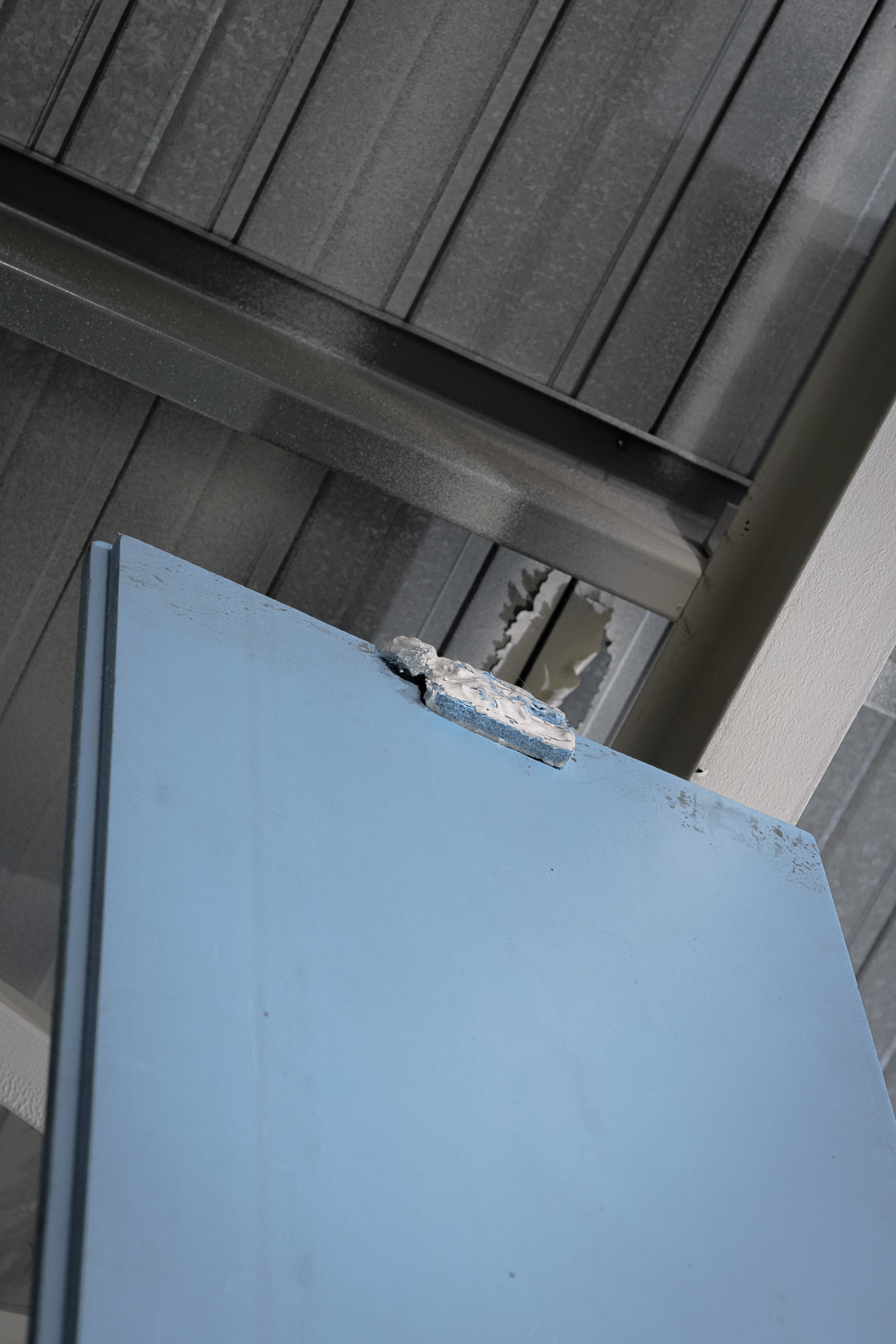

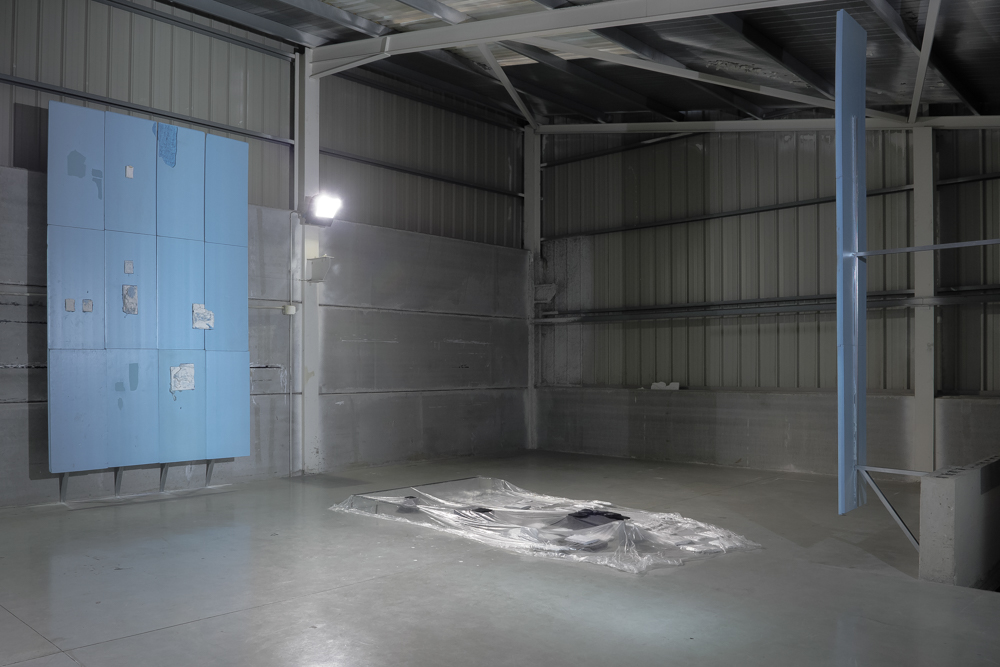
Cuando camino por la calle, a menudo me fijo en los bordillos de las aceras. Las juntas de cemento entre las distintas piezas del bordillo empiezan a secarse con el tiempo, se fragmentan y empie- zan a convertirse en polvo, pronto las piezas del bordillo también empiezan a descomponerse y en los recovecos que quedan entre los fragmentos empiezan a acumularse el polvo, pelos, fragmentos de otras cosas, ceniza, vida, agua… No importa donde mire, el paso del tiempo se hace evidente y no puedo evitar verlo en todo lo que me rodea y en todo lo que hago, en los gestos y en los procesos. El tiempo se escapa poco a poco, de forma ininterrumpida entre esfuerzos vanos de solidificar el presente, de dejar constancia, de tratar de escapar a la entropía.
Detener el tiempo por un momento. Hacer que lo provisional se vuelva permanente. Al fin y al cabo se trata de una decisión; de cuándo debe terminar un proceso y considerarse como acabado. Como se recogen pedazos de piedra tallada de entre la maleza y se catalogan, se añaden fragmentos a una historia construida de vacíos.
UN TODO AHORA plantea una reflexión en torno a la construcción de la historia, de la memoria, pero también del paso del tiempo desde su aspecto más puramente físico y material. Varios fragmentos son presentados haciendo evidente la ausencia, pero también la presencia de un todo ahora incompleto y el espectador se enfrenta a la experiencia de intentar completar aquello que se ha perdido en el transcurso del tiempo. Pueden encontrarse partes de cuerpos, formas que nos sugieren referencias orgánicas, que nos invitan a pensar en una mano lejana que trata de inmortalizar un presente ya perdido, pero que con la acción del tiempo y los procesos de erosión, ha alcanzado un grado de entropía que lo acercan al paisaje.
Si se mira con atención, entre la escayola -antes líquida, ahora sólida- que materializa las piezas, puede verse sobresalir pequeños fragmentos de material plástico, una estructura digital, una impresión 3D que deja entrever un proceso temporal más intrincado del que se podía prever inicialmente. Las piezas, no son en realidad fragmentos erosionados del tiempo, sino que esta erosión aparente es fruto de un proceso de impresión 3D en el que se construye una malla, un fantasma digital extraído escaneando tallas de piedra antiguas, que posteriormente se sumerge en escayola, atrapando en su retícula el líquido y haciendo que se solidifique con la forma de la malla.
En el proceso de Raul y Carlos existe un constante deambular entre lo líquido y lo sólido, lo provisional y lo definitivo, el fragmento y la totalidad, la presentación y la representación. Dicotomías y contradicciones que sirven de coordenadas para un investigación basada en la experimentación con los materiales y pro- cesos -físicos y digitales-. Confluyen los espectros de distintos procesos, naturales y culturales, la talla, la erosión, el escaneo, la impresión, el fraguado y solidificación de la escayola -el paso de líquido a sólido-. Puede verse la mano de quien talló las piedras originales a las que estas copias hacen referencia, puede verse el viento, el agua erosionando estas, están los procesos digitales por los que mediante el escaneo se convierte la posición y la forma de un objeto en unos triángulos y unas mallas en un ordenador y pueden verse las marcas del proceso de impresión por el que el material plástico se ordena para rematerializar aquello que se escaneó.
Se trata de un simulacro, se adoptan las formas propias de la arqueología o la museística, ya que estas han desarrollado los dispositivos necesarios para mostrar fragmentos y construir relatos a partir de estos. Como si se tratase de falsear una historia, un pasado, un discurrir del tiempo, se han construido las piezas ya como fragmentos, invitando a completar aquello que falta. Sugiriendo una imagen mayor, un estar implícito algo que no está presente.
ANDREU PORCAR
When I walk down the street, I often notice the curbs on the sidewalks. The cement joints between the different pieces of the curb begin to dry out over time, they fragment and begin to turn to dust, soon the pieces of the curb also begin to decompose and in the nooks and crannies between the fragments dust begins to accumulate, hairs, fragments of other things, ash, life, water… No matter where I look, the passage of time becomes evident and I can’t help but see it in everything that surrounds me and in everything I do, in gestures and processes. Time escapes little by little, uninterruptedly between vain efforts to solidify the present, to record, to try to escape entropy.
To stop time for a moment. Making the temporary permanent. At the end it is a decision; of when a process should end and be considered finished. As chunks of carved stone are collected from the undergrowth and cataloged, fragments are added to a story built of voids.
UN TODO AHORA (A Whole Now) proposes a reflection on the construction of history, of memory, but also of the passage of time from its most purely physical and material aspect. Several fragments are presented making evident the absence, but also the presence of a-whole-now incomplete and the viewer faces the experience of trying to complete what has been lost over time. Body parts can be found, forms that suggest organic references, that invite us to think of a distant hand that tries to immortalize a present already lost, but that with the action of time and erosion processes, has reached a degree of entropy that bring it closer to the landscape.
If you look carefully, between the plaster -before liquid, now solid- that materializes the pieces, you can see small fragments of plastic material coming through, a digital structure, a 3D impression that reveals a more intricate temporal process than could be foreseen initially. The pieces are not actually eroded fragments of time, but this apparent erosion is the result of a 3D printing process in which a mesh is built, a digital ghost extracted by scanning ancient stone carvings, which is later submerged in plaster, trapping the liquid in its grid and causing it to solidify in the shape of the mesh.
In the process of Raúl and Carlos there is a constant wandering between the liquid and the solid, the provisional and the definitive, the fragment and the totality, the presentation and the representation. Dichotomies and contradictions that serve as coordinates for research based on experimentation with materials and processes -physical and digital-. The spectra of different processes converge, natural and cultural, carving, erosion, scanning, printing, the setting and solidification of the plaster -the passage from liquid to solid-. You can see the hand of the person who carved the original stones to which these copies refer, you can see the wind, the water eroding them, there are the digital processes by which the position and shape of an object is converted into triangles and some meshes on a computer and you can see the marks of the printing process by which the plastic material is ordered to rematerialize what was scanned.
It is a simulacrum, the forms of archeology or museums are adopted, since these have developed the necessary devices to show fragments and build stories from them. As if it were a matter of falsifying a history, a past, a flow of time, the pieces have already been built as fragments, inviting us to complete what is missing. Suggesting a larger image, an implicit being of something that is not present.
ANDREU PORCAR